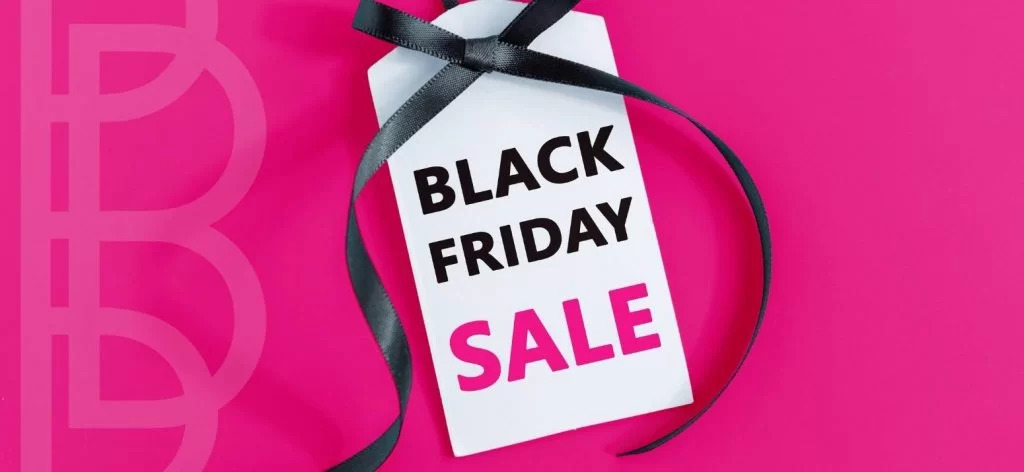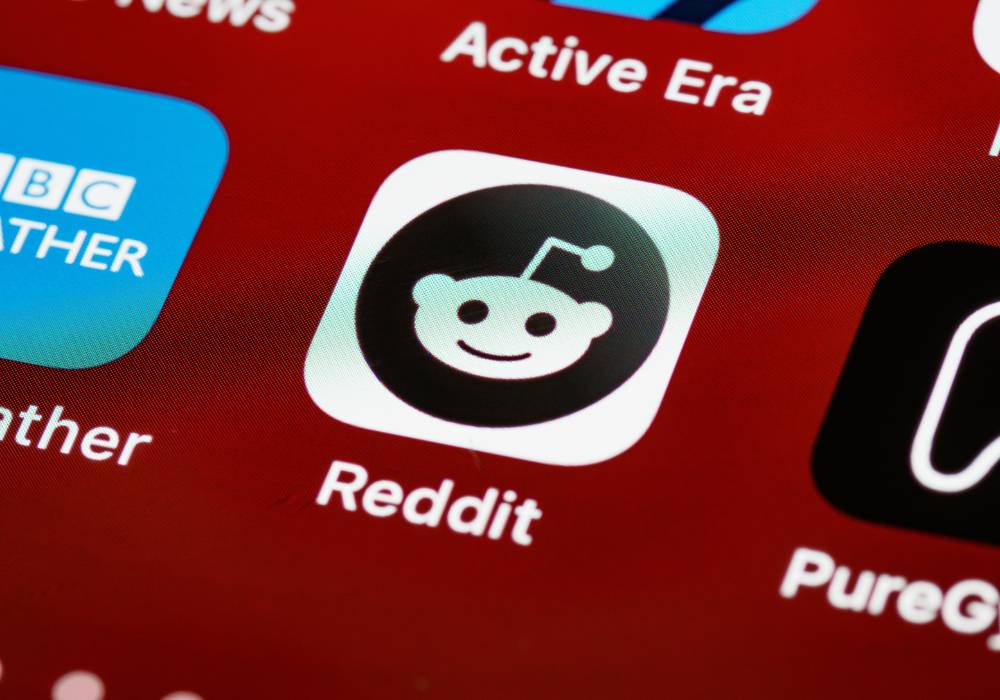Black Friday is a somewhat divisive subject in the UK for ecommerce brands and marketing teams.
For some, it’s an opportunity to grab a share of the pie with consumers that are primed and ready to buy. For others, it can feel like a mixed bag, with lots of preparation and resource going into marketing for Black Friday and the returns don’t always seem to justify the means, especially when the discounts you offer cut margins right down. For others, it’s perhaps something they’ve tried in the past and no longer feel it’s worth the time or effort to get involved in Black Friday or Cyber Monday and some have moral objections to its very existence.
We believe that with the right Black Friday ideas, campaign planning and implementation, any ecommerce brand can achieve success during this event, and that will look different for every business.
We’ve delved into the marketing archives to find some of the best and worst examples of Black Friday campaigns in the UK recently and looked into why they did or didn’t work and what we can learn from them to take into future plans and activity.
Good Black Friday campaign examples:
IKEA (2021) – Buy-Back on Black Friday
IKEA approached Black Friday differently to most retailers in 2021. After having launched their buy-back service a few months earlier, they opted to make this a major focus for Black Friday alongside some product discounts for members.
The promotion worked by first getting an online estimate for the buy-back value of furniture, then the customer needed to take the piece(s) into one of their physical stores to actually receive vouchers for whatever they had brought in.
The Black Friday promotion added an additional 50% value to the pieces bought back by the store for a limited period of time.
Why it worked
IKEA aren’t daft! This scheme ensures that the ‘savings’ customers make by recycling their old IKEA furniture is spent only at IKEA – so it keeps the money very much in the family.
The offer was only available to IKEA members (either family members or part of their business scheme) which provided another incentive for people to join and carry on returning to the store regularly once this specific event had ended.
They also understand the value of in-store visits at IKEA, where it’s rare that people come out of their maze-like store layouts with only the item(s) they went in for! Picking up a few unplanned purchases and potentially staying for some food at the same time means that most customers probably ended up spending far more than the value of the vouchers they got for selling back their original furniture.
There are lots of positive vibes along with the shopping trip too; that good feeling you get when you recycle something, along with probably a replenished stash of meatballs and Daim Bars, make this a strong win for both the retailer and for customers.
This is a campaign that pretty much hits the mark on all levels – making customers feel good about what they’re doing, boosting sales, increasing the order value and driving future customer loyalty.
What we can learn
Not many retailers have the setup required for a scheme this big, which crosses over from online to offline shopping and also has experiential elements in order to work.
However, taking some inspiration from it could be the way to go for ecommerce brands. Prioritising sustainability and offering store vouchers in return for positive action could be a good focus for a future Black Friday campaign, as could making your biggest discounts only available to ‘members’ or subscribers which can help you secure further future revenue too from your expanded existing customer audience.
Raeburn (2021) – Buy Nothing New
London fashion studio Raeburn took a somewhat different approach to many retailers with 2021’s Black Friday campaign by not selling any new products at all. In fact, they actually disabled their online shop, handed over their bricks and mortar store to another brand for the weekend, and all the new Raeburn stock was removed from display.
Quite an unconventional approach to one of the biggest sales weekends in the calendar, but Raeburn had a strong message behind their Black Friday campaign.
They handed their store to Responsible, the second-life clothing platform and urged people to ‘Buy Nothing New’. Raeburn encouraged their customers to visit their store and buy preloved clothes from any brand to make better use of clothing already in circulation.
Why it worked (ish)
Research shows that consumers are putting more and more importance in the ethical and moral stances taken by brands when it comes to making buying decisions.
While it might mean that short-term sales don’t increase, having a loyal and motivated customer base is something that ecommerce brands highly value.
This campaign (along with previous activity on Black Fridays of the past that show this is a long-held stance) gives like-minded consumers an emotional connection to the brand – which is priceless.
Take a look at some sustainable marketing examples if you want to find out more about this area.
Raeburn has one physical store, in London, so it does mean that consumers not living locally would be unable to take part in the preloved fashion part of the campaign. So it did run the risk of perhaps slightly alienating some customers living elsewhere as they were unable to connect with the campaign in the same way. Perhaps if the brand had included more suggestions for non-local consumers to help support the effort, then it would feel more inclusive?
What we can learn
Some things are more important than short-term profits, and lots of consumers really care about shopping with brands that stand for causes that resonate with them. These customers are more likely to be loyal and even become brand advocates, which can bring its own financial results over the long-term.
But where this particular campaign perhaps fell short was that it didn’t give their full online audience an opportunity to actively stand with them (other than removing their ability to shop online).
Any brand selling online and using campaigns of this type should try to be as inclusive of their whole audience and customer base as possible, even if just providing them with some alternative things they can do to feel more a part of things if they can’t do so physically.
Bad examples of Black Friday campaigns
Pretty Little Thing (2021) – 100% off discount
Part of the often-criticised fast fashion Boohoo Group empire, Pretty Little Thing are renowned for offering rather hefty discounts on their clothing, which is already considered the value end of the market even before promotions.
In 2021, they went even further by offering up to 100% off some items. Essentially, you could shop some pieces for free, and many others with substantial savings, although there were limitations on orders and very restricted stock on most of the included lines to try and prevent reselling etc.
The campaign resulted in quite a strong backlash online, with some people accusing the brand of trivialising the effort that goes into making clothing. However, the biggest criticisms seemed to be from customers online disappointed with the small or non-existent price reductions on things they actually wanted to buy.
I stayed up for the PLT Black Friday deal when I have work tomorrow for all the items to be THE SAME PRICE WHYYYY
— Hope Robertson (@hopeerobertsonn) November 26, 2021
Why it didn’t work
Undoubtedly, some people will have felt that they bagged a bargain from PLT and were happy with the promotion. But it looks like previous Black Friday sales that were more successful in the past actually meant that a more restricted one left people disappointed this time.
Pretty Little Thing went hard on the PR for this campaign and as a result it was featured heavily in the press with the 100% off headline.
This potentially backfired on them because they didn’t have the stock levels to support demand and perhaps chose some of the wrong lines to discount, which resulted in quite a lot of negative brand sentiment online.
Will it stop their target audience buying from them again? Probably not. But it might mean they are less likely to bother staying up until midnight to check things out next Black Friday.
What we can learn
No one can claim that PLT don’t know their audience. When your target market is 18-24 years, then cheap and cheerful has long been the name of the game. But things are changing.
You don’t have to be into your 30s and upwards to have a social conscience and want to take environmental responsibility for your shopping habits. Ecommerce brands want to incentivise sales on Black Friday, but it doesn’t necessarily mean that you have to go to extremes like PLT do.
Taking time to properly survey your customers would be a great use of time before planning a bit Black Friday campaign to make sure you hit the mark with what they are looking for, rather than just taking things further and further each year.
O2 (2017) – Social media flop
Mobile phone brand O2 are known for offering discounts every year, and they have undoubtedly got better at marketing this in recent years – but their 2017 efforts were pretty poor. Their social posts including special offers got little to no engagement and seemed to make no waves whatsoever.
Grab the Huawei P10 and claim a free MediaPad T3 8 this Black Friday at O2. pic.twitter.com/9Bx3ogvvXD
— O2 (@O2) November 24, 2017
Why it didn’t work
O2 used social media to inform people about offers, but failed to make any real use of these posts and, some may argue, that they didn’t even do the basics right.
They failed to include any hashtags, so anyone looking for deals on Black Friday would have to look pretty hard to stumble across their posts if they didn’t already follow the brand. The above post got a whole 4 engagements, even though the offer itself seems half decent.
There is no ‘save £XXX’ amount or a headline deal shown, and no link to the deal on the website (or anything to click at all) so people simply don’t have a reason to look further into it.
What we can learn
Having some good discounts or deals available is one thing, but how ecommerce brands communicate these is critical for a busy time like Black Friday.
Making deals as easy to find as possible is essential when all of your competitors are also running promotions, so getting the basics right, like social posts that use appropriate hashtags and include a compelling image, the facts of the deal, a link to where people can buy it and a CTA, is the very least you should be doing.
You have a limited time in which people are looking for deals like this, so it’s vital to get the important information across.
What does it mean for your next Black Friday campaign?
Whether you’re a brand that jumps into Black Friday planning like Tom Daley off a 10m dive board, or want to opt out totally because it doesn’t fit with your ethos, or anything in-between, it gives you an opportunity to say and do something that your specific audience will value and can get on board with.
That might be deciding on a themed promotion, specific lines that you’re going to discount or a freebie with every sale. It might be a series of social posts explaining why you’re not taking part and giving suggestions for customers who feel the same way. Either way, it will provide engagement points with your audience and ensure that you’re part of the online conversation at this important time.
Whatever your stance, you might want to take a look at our post on planning for peak selling season for some tips around ecommerce SEO services, UX and other website and marketing tips for making the most of seasonal sales.
Let’s talk about your next campaign
If you’d like to find out more about our approach to managing successful digital marketing campaigns, get in touch using the form below.








